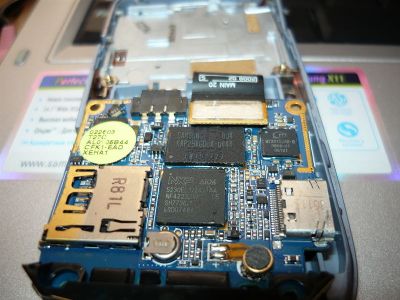The MONTBLANC project brings together leading researchers from Spain,
the UK, France, Italy and Germany with the aim of delivering
supercomputers that could revolutionise the way we work. These new
machines would be built around 'exascale processors' – processors that
can carry out in the order of 10 to the power of 18 (1, followed by
eighteen zeroes) operations a second. It’s also some nine orders of
magnitude faster than your current home or laptop computer.
"There are two things derived from exascale: It's not just solving
new big problems, like simulating the human brain," says Alex Ramirez,
coordinator of the Mont-Blanc project. "Maybe more important, is to
enable wide accessibility to HPC in everyday life, such as having a
supercomputer on every doctor's office for genome-based cancer
diagnosis. The possibilities of that are huge."
More performance, less energy
As incredible as it may seem, these new processors won't just
deliver higher performance – some nine orders of magnitude faster than
your existing desktop or laptop processor – but they will also consume
less energy. According to Mr Ramirez, the processors that the MONTBLANC
project is using will consume between 15 and 30 times less energy that
the systems we use today.
The trick is to switch away from the chips we use in our larger
devices and to use much more efficient processors like the ones
generally used in mobile phones and other small devices instead.
At present, billions of High Performance Computing cycles are
offered as a service to businesses and researchers in manufacturing,
pharmaceuticals and the financial services industries via the PRACE
(Partnership for Advanced Computing in Europe) project. PRACE gives
access to six high performance computing clusters that offer, between
them, nearly 20 petaflops (20 quadrillion operations per second) of
processing power. But, impressive as this is, the PRACE resources cannot
meet the current demand for high performance computing from research
and industry, and the available processing power it’s still two orders
of magnitude short of exascale processing.
"The demand for HPC resources is endless," says Dr Ramirez.
"Currently there are more projects submitted to PRACE's quarterly calls
than can be granted access. MONTBLANC aims at becoming an alternative
HPC platform for PRACE and other HPC centres."
Building an 'Airbus for HPC'
In order to build this capacity, the EU has set up a public-private
partnership (PPP) to support the development of HPC technologies: the
European Technology Platform for High Performance Computing (ETP4HPC, (
www.etp4hpc.eu)) is the private partner that joined forces with the Commission to set up this PPP in HPC.
Says Dr Ramirez: "The PPP in HPC offers the opportunity to increase
collaboration with European HPC technology providers
like European digital systems experts Bull and UK-based chip
manufacturer ARM, and enables development of a European HPC ecosystem.
It may be the first step towards something like Airbus for HPC, enabling
Europe to become an HPC provider, from being an HPC consumer."
The MONTBLANC project is a cornerstone of this PPP, and the project
partners intend to develop an exascale processor that will lead the
world in efficient, high performance computing. "MONTBLANC will allow
HPC centres to compute more with the same power, compute more in the
same space, and compute more for less money," says Dr Ramirez.
Link to project's website:
-
MONTBLANC-Project.eu
Other links:
-
European Commission's Digital Agenda website
